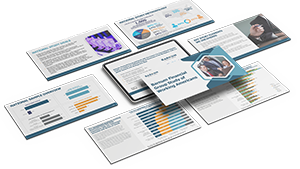
We all feel the pull to contribute to causes we care about, whether it’s a local food bank, a national environmental organization, or a global medical research initiative. We want to make a difference, which often results in spontaneous donations when opportunities arise.
But what if your giving could be more than just a reaction? What if it could be a deliberate and thoughtful process, leading to greater impact and deeper personal fulfillment? Philanthropy requires a strategic approach to charitable giving that empowers everyone, regardless of their financial means, to give with intention and create meaningful change.
The Power of Strategic Giving
While every act of kindness is valuable, strategic giving takes your generosity to the next level. Instead of responding to every appeal, philanthropic planning encourages you to take a step back and consider the bigger picture. It’s about aligning your charitable contributions with your core values and understanding how your resources can be most effectively deployed to support the causes you truly believe in.
Identifying Your Guiding Values
The foundation of effective philanthropic planning lies in understanding what truly matters to you. What are the principles and beliefs that guide your life? What kind of world do you hope to see? Taking the time to reflect on your core values will help you identify the causes and organizations that resonate most deeply with you. Consider asking yourself:
- What issues keep me up at night?
- What injustices do I feel compelled to address?
- What kind of impact do I want to have on the world?
- What are the values I want to instill in my family and community?
Your answers to these questions will serve as your compass, guiding your philanthropic decisions and ensuring your giving is aligned with your convictions.
Assessing Your Financial Resources
Once you have a clearer understanding of your values, the next step is to assess your financial capacity for giving. This doesn’t mean you need to be wealthy to engage in philanthropic planning. It simply involves understanding your current financial situation, including your income, expenses, and assets, and determining what level of charitable giving is sustainable for you over time. Consider:
- Regular Budgeting: How much can you comfortably allocate to charitable giving each month or year?
- One-Time Gifts: Are there specific times or circumstances when you might be able to make a larger contribution?
- Long-Term Assets: Could you consider including charitable giving in your estate planning?
Remember, every contribution, no matter the size, can make a difference when directed strategically. Philanthropic planning is about making the most of the resources you have.
Choosing Your Charitable Partners Wisely
With your values identified and your financial capacity understood, the next crucial step is to research potential charitable partners. Not all organizations operate with the same level of effectiveness or transparency. Taking the time to vet potential recipients of your generosity ensures that your contributions are used efficiently and make a real impact. Consider researching:
- Mission and Goals: Does the organization’s mission align with your values?
- Programs and Impact: What specific programs do they run, and what evidence do they have of their effectiveness?
- Financial Health and Transparency: Are their financial reports readily available and do they demonstrate responsible stewardship of funds?
- Leadership and Governance: Who leads the organization, and what is their track record?
Resources like Charity Navigator, GuideStar, and the Better Business Bureau Wise Giving Alliance can provide valuable information to help you make informed decisions.
Choosing Your Giving Methods
Finally, philanthropic planning involves exploring the various ways you can give. Beyond writing a check, consider options that might offer greater impact or align better with your financial situation:
- Recurring Donations: Setting up regular monthly or quarterly contributions provides a consistent stream of support for organizations.
- Volunteering Your Time: Offering your skills and time can be just as valuable as monetary donations.
- Donating Appreciated Assets: Giving stocks or other appreciated assets can offer tax advantages.
- Creating a Donor-Advised Fund: This allows you to make a tax-deductible contribution now and recommend grants to charities over time.
- Including Charitable Bequests in Your Will: This allows you to leave a lasting legacy by supporting causes you care about in your estate plan.
Embracing Your Role as a Strategic Philanthropist
Philanthropic planning is a powerful tool available to everyone who wants to make their giving more intentional and impactful. By taking the time to identify your values, assess your capacity, research organizations, and choose your giving methods wisely, you can become a strategic philanthropist. Start today, no matter how small the step, and discover the power of giving with intention.




